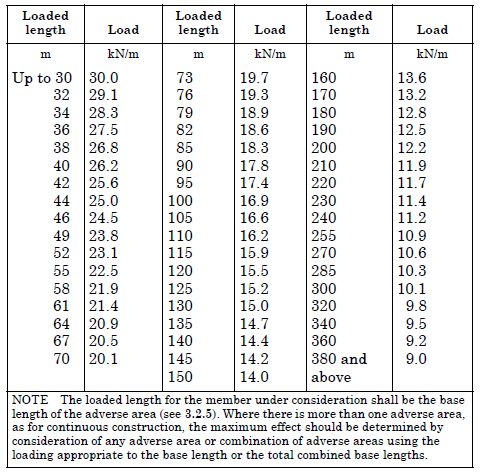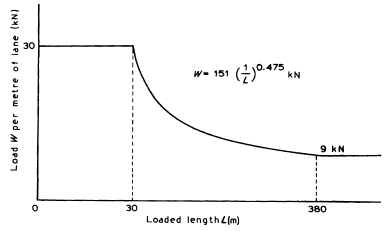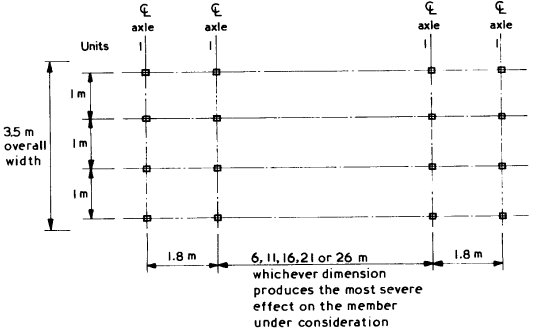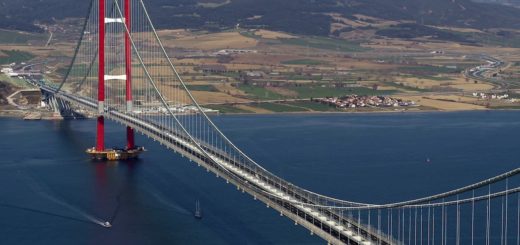Types of Loads on Bridges (16 different types)
Different types of loads on bridges are discussed in this article. Correct identification of the load to be considered during the design and construction is very important.
There are very bad experiences in the world that cause failures of bridges or later modifications were done to make it suitable to use. The millennium bridge -London is one of the examples that needed modifications after construction due to the vibration issues.
Firstly, we discuss briefly types of bridges before discussing the types of loads on bridges.
- Arch bridge
- Suspension Bridges
- Truss Bridges
- Beam Bridges
- Cantilever Bridge
And many more types of bridges can be found.
Let’s discuss the types of loads on bridges.
Types of Loads on Bridges
Different types of loads on the bridges are discussed in detail. It covers the live loads, dead loads, and other applicable types of loads.
We are focusing on the loads to be considered in the dining of the bridge according to the BS 5400.
Dead Load
This is a well-known load for us. It is the self-weight of the structure. In addition to the self-weight of the structure, there are other types of loads such as superimposed load.
Weights other than the own weight of the structural elements of the bridge can be considered as superimposed dead loads.
Concreting fillings, finishing concretes, leveling concretes, etc can be considered as superimposed dead loads.
Live Loads
Mainly there are two types of live loads are considered as per the BS 5400 Part 2.
- HA Loads (uniform load and knife-edge load)
- HB Loads
HA Loads
HA loads are uniformly distributed load on the bridge deck. These types of loads on bridges must be considered and it is an essential type of load that we must apply to the design.
HA loads to be applied depends on the span of the bridge. The following procedure can be used to evaluate the uniformly distributed load.
- When the span of the bridge is less than 30m, UDL shall be taken as 30kN per meter length per notional lane.
- When the loaded length exceeds 30m, the load can be calculated from the equation W = 151 (1 / L)0.475 but it should not be less than 9 kN/mm2 Here, L is the loaded length.
- The following table could also be used for ease of reference.
Further, the following figure indicates the variation of the HA UDL with the span of the bridge.
In addition to the UDL, HA point load- knife-edge load(KEL) shall be applied simultaneously in the same notional lane.
KEL shall be taken as 120kN and it shall be applied in the mid-span of the torsional lane for maximum bending moment and it shall be applied close to the support for the maximum shear force.
HB Loads
It is the load applied considering the axles of the vehicle. It also depends on the length of the vehicle, the effect on the bridge varies. Further, the axel load is also varying based on the number of HB units considered.
The following figure indicates the HB vehicle considered in the desing.
HB vehicle will be located in such a way that makes the critical load case.
Further, the number of HB units is decided based on the project design intent. One Unit of HB considered as 10kN (2.5kN per axel)
Longitudinal Loads
Longitudinal loads are due to the traction or breaking is considered in the design.
There are HA and HB type longitudinal loads.
HA type nominal load = 8 kN/m x Loaded length + 200 kN ≤ 700 kN
HB type nominal load = 25% of nominal HB load
The evaluations based on BS 5400 Part 2: 1978. There could be slit variation in the values in the latest standards.
Skidding Loads – Horizontal Load – Accidental Load
This load shall be considered with the HA loads.
Nominal Skikkding Load = 250kN
This load shall be applied parallel to the road surface, and it will be in any direction.
Further, it shall be applied on one notional lane only.
Water Current – Horizontal Load
This a type of load that needs to consider in the desing. The values to be considered could be as per the local guidelines.
Centrifugal Load
This not commonly consider load in bridge design.
Due to many reasons, bridges are avoided mostly.
The centrifugal load can be calculated from the following equation.
Fc = 30000 / (r + 150), force in kN
Where Fc is the centrifugal force and r is the radius of the lane.
Vehicle Collision Load
Vehicle collision loads on highways can be obtained from the following table extracted from BS 5400.
Collision load is a special load case and it does not include in all the load cases.
Wind Loads
There are equations given in BS 5400 Part 2 to calculate the wind loads.
In addition to the BS 5400 or as per the local standards, wind loads on the bridge can be calculated.
Temperature Loads
Effect of the temperature on bridge shall be considered as per the Cl 5.4 of BS 5400 Part 2: 1978.
Shrinkage and Creep
Prestressing of concrete beams suggested to shrinkage and creep actions. This deformation could affect bridge design.
In addition, when we consider the composite action of the bridges, cast in-situ concrete placed on a precise beam subjected to shrinkage.
It induces additional stress. Necessary detailing of reinforcements in order to avoid this effect shall be done.
Earth pressure
Application of earth pressure on the bridge can be done in the usual manner.
Based on the location location, surcharged loads shall be considered for the desing.
Active, at rest, and passive pressure coefficients could be calculated based on Coulomb’s method or any other applicable method.
Different Settlement
If the foundation of the abutments and the piers is a pile foundation, there could not be a different settlement.
However, when there are shallow foundations, there is a possibility of having different settlements due to the variation of the loads and ground conditions.
Erection Loads
The nature of the construction significantly affects the loads to be considered as erection loads.
Further, the sequence of the construction also a significant factor to be considered during the design.
In addition, BS 5400 Part 2 Cl 5.9 shall be referred for additional information.
Buoyancy
When the water table is above the foundation or any part of the structure, there will be buoyancy force on the structure.
It shall be considered during the desing as it could affect significantly the desing of the structure.







